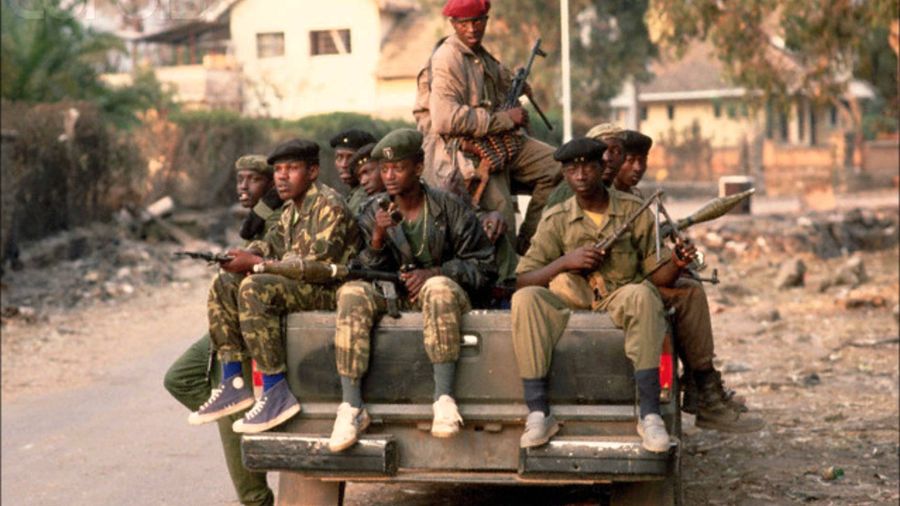April 7, 1994 – Remera killing of intellectuals
As soon as the presidential plane was shot down, the RPF’s military forces immediately began rounding up and killing prominent Hutus in Remera, a Kigali neighbourhood it already controlled. (Judi Rever, 2018. In Praise of Blood, The Crimes of the Rwanda Patriotic Front. Toronto: Random House Canada)
In this neighbourhood of Remera in Kigali city, the RPF selectively killed 121 people, mostly intellectual Hutus and their entire families, using an already drawn up list of targeted victims.
They include former prefect of Kigali; Claudien Habarushaka, former prefect of Ruhengeri; Marcel Munyangabe, former President of the Audit Court and members of his family; Sylvestre Bariyanga and his entire family; Émile Nyungura and almost his entire family (his son, singer Corneille who currently lives in Canada, was the only survivor); Emmanuel Bahigiki and his entire family; Iréné Kayibanda, the son of former president Grégoire Kayibanda; Muhamud Rahamatar; Félicien Mbanzarugamba, former cabinet minister; Benoît Ntigurirwa, and many others. (Pierre Pean, Noires Fureurs, Blancs Menteurs: Rwanda1990-1994, 2005, p.249)

Summary and Arbitrary Executions
Alison Des Forges reported the following, in 1999, for Human Rights Watch (HRW):
“Within a day or two of the renewal of conflict [6 April 1994], RPF soldiers began assassinating persons associated with the Rwandan government, the army, or political groups thought to be hostile to the RPF. In many cases, the soldiers sought out the targeted persons at their homes and also killed family members or others, presumably to eliminate any witnesses. RPF troops reportedly killed Sylvestre Bariyanga, former prefect of Ruhengeri, and his family on April 9 in the Remera section of Kigali. They are also accused of slaying Col. Pontien Hakizimana, a former officer of the National Police, his wife and children and Major Helene Bugenimana, National Police officer, and three of her children, who were at Hakizimana’s house.
On April 12, RPF soldiers dressed as government troops, supposedly killed Emile Nyungura, a leader of the PSD party. In the Gishushu section of Kigali, some RPF troops are said to have slain Felicien Mbanzarugamba, an administrator of the Bralirwa brewery and others are reported to have killed Emmanuel Hitayezu, former minister of planning as well as his Tutsi wife. Théoneste Mujyanama, former minister of justice, and his family were executed on April 16 while in another incident, Phénéas Bwanakeye of Kibuye was slain with thirty-two others in the household of his son in the Remera section of Kigali.
On April 13, Emmanuel Bahigiki, former secretary-general of the planning ministry, left his home with his family and some Tutsi whom he had been protecting under the escort of RPF soldiers; the Tutsi were told to go on ahead but heard the shots that killed Bahigiki and his family. Claudien Habarushaka, the former prefect of Kigali, was last seen being escorted by RPF soldiers.
A number of people who had taken refuge under UNAMIR protection at Amahoro stadium were taken away by RPF soldiers and then “disappeared.” Among them were Charles Ngendahimana, younger brother of the assassinated politician Emmanuel Gapyisi, and Doctor Prudence, a physician who had been treating the injured and wounded in the stadium.
Des Forges, A. L., 1999. The Rwandan Patriotic Front. In: “Leave None to Tell the Story” : Genocide in Rwanda.: Human Rights Watch.
In his 494-page book, titled “Rwanda: Secret History” in pages 262-263: Lieutenant Abdul Joshua RUZIBIZA, former military soldier of the Rwandan Patriotic Front (RPF) recognizes that are armed led the hunt for intellectuals and Hutu intelligentsia in the city of Kigali from 13 April 1994.
(…) “The other task, carried out by the 3rd battalion, the DMI and the extremists of the RPF, was the selection and the kidnapping of Hutus wherever they were taken prisoner by the APR in the city of Kigali. They were rounded up to be liquidated later. This task was carried out by people who knew the city of Kigali well and by the politicians protected by the RPF. It was Captain Charles KARAMBA, Captain Jean Damascène SEKAMANA, Sergeant Deus KAGIRANEZA and the other intelligence agents who drew up lists of Hutus to be killed on the pretext that they were educated Hutus or had influential families. The task was easy because they took information from refugee Tutsi families at the CND or Amahoro stadium in Remera “(…).
Ruzibiza, A. J., 2005. Rwanda: l’histoire secrète. Editions du Panama
